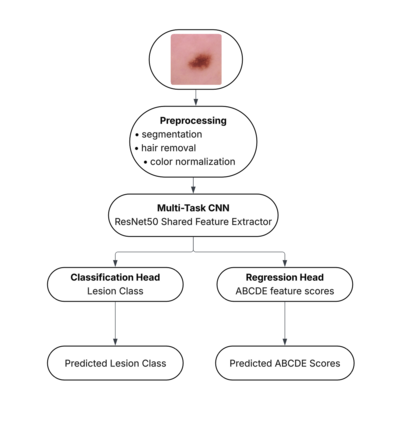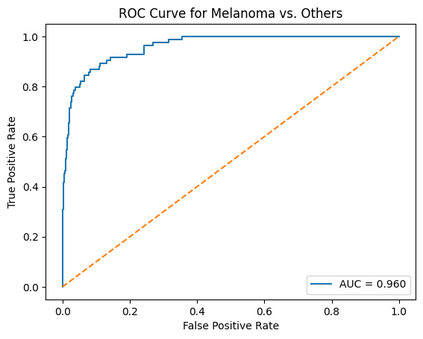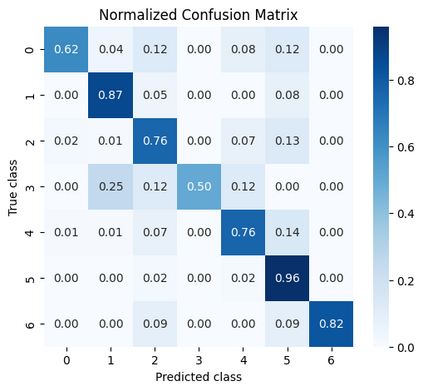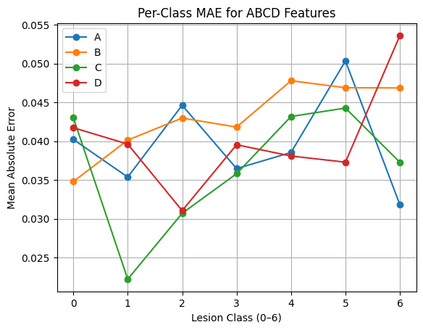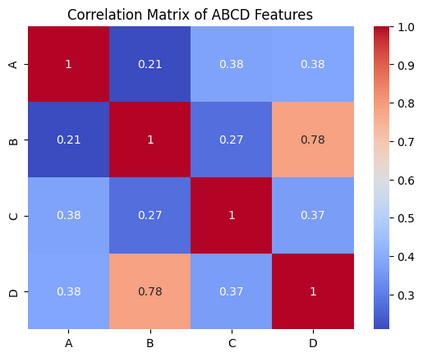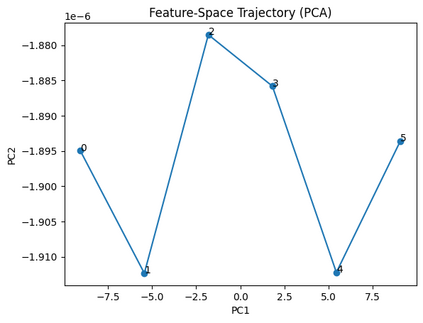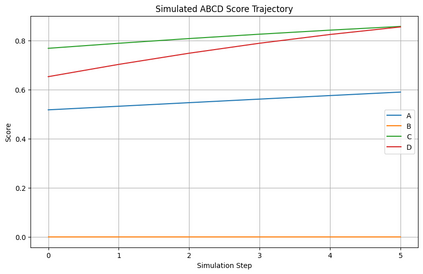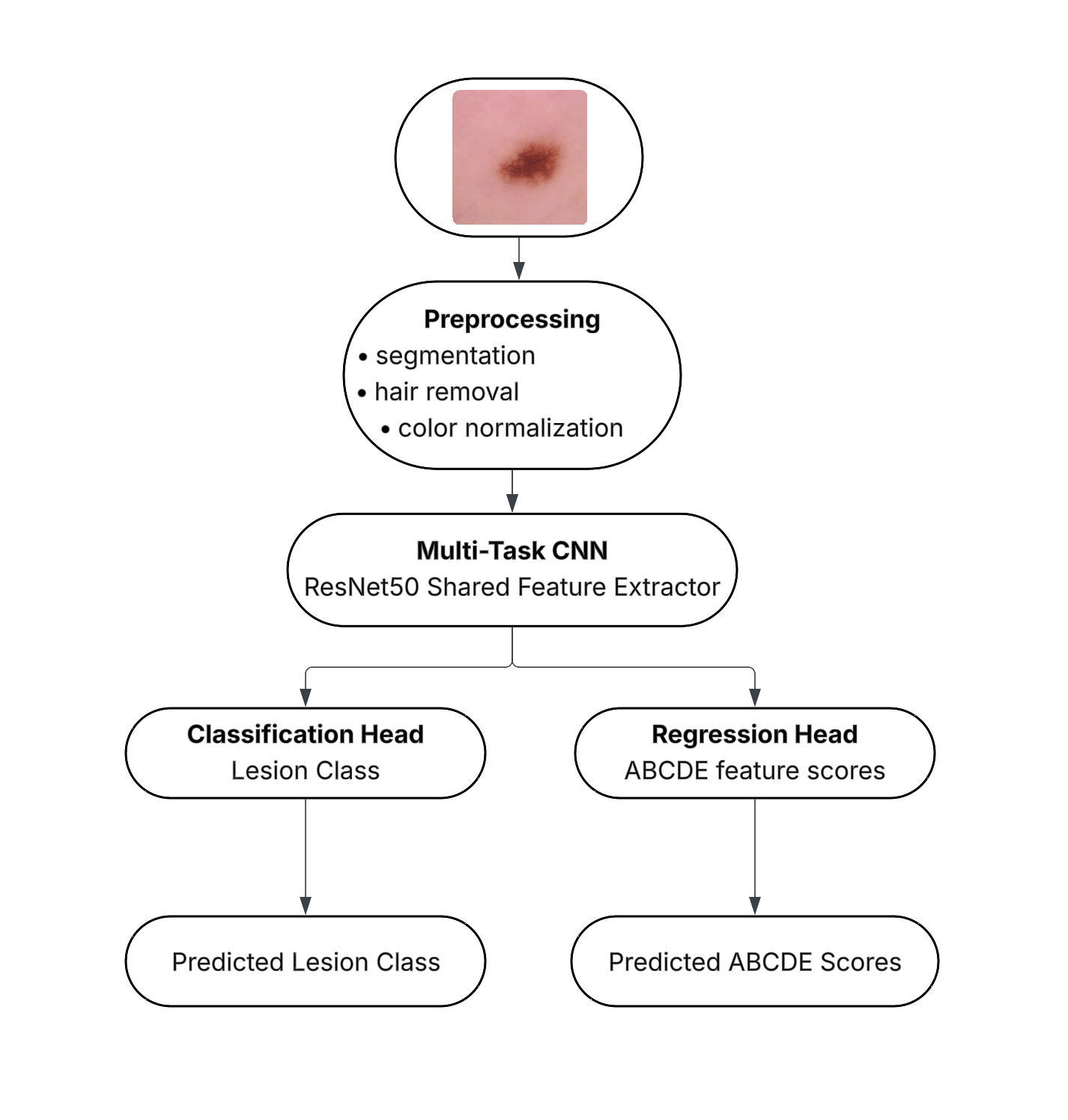Early detection of melanoma has grown to be essential because it significantly improves survival rates, but automated analysis of skin lesions still remains challenging. ABCDE, which stands for Asymmetry, Border irregularity, Color variation, Diameter, and Evolving, is a well-known classification method for skin lesions, but most deep learning mechanisms treat it as a black box, as most of the human interpretable features are not explained. In this work, we propose a deep learning framework that both classifies skin lesions into categories and also quantifies scores for each ABCD feature. It simulates the evolution of these features over time in order to represent the E aspect, opening more windows for future exploration. The A, B, C, and D values are quantified particularly within this work. Moreover, this framework also visualizes ABCD feature trajectories in latent space as skin lesions evolve from benign nevuses to malignant melanoma. The experiments are conducted using the HAM10000 dataset that contains around ten thousand images of skin lesions of varying stages. In summary, the classification worked with an accuracy of around 89 percent, with melanoma AUC being 0.96, while the feature evaluation performed well in predicting asymmetry, color variation, and diameter, though border irregularity remains more difficult to model. Overall, this work provides a deep learning framework that will allow doctors to link ML diagnoses to clinically relevant criteria, thus improving our understanding of skin cancer progression.
翻译:暂无翻译

